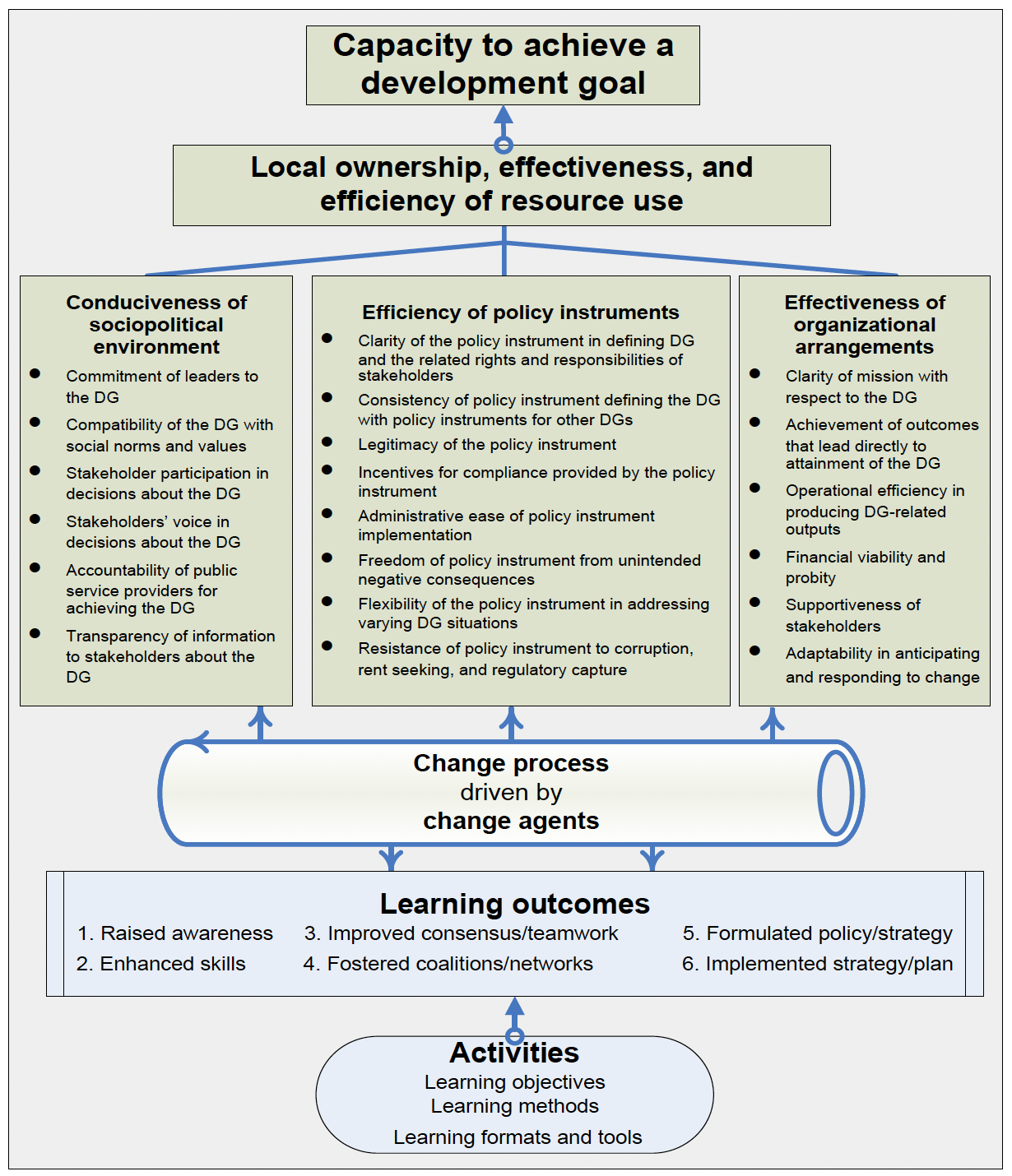Lecture 8 Overcome Resistance and Improve Organization Capacity
March 25, 2025
Recap lecture 7
- Case Study Evaluation
- Story: Elinor Ostrom and Case Studies
- Case: NYC Gifted and Talented (G&T) Program
Today’s agenda
- Guest Speaker: Beatrice Teston
- Overcome Resistance and Improve Organization Capacity
- Story: James March and Organization Theory
- Case: American Red Cross (ARC) Haiti Relief Program
Who cases about evaluation
- Funders
- Policy makers
- Organization
Managing an evaluation
A partnership between the research team and policy team
Research team
Technical quality and scientific integrarity
- PI, evaluation manager
- Sampling/interview/survey exert
- Data collection team
Policy team
- Policy makers
- Program implementers
Research-Policy team models
- Oursoucing evaluation (third party)
- Integration (Innovations for Poverty Action)
- Parnership models (World Bank)
General outline of an impact evaluation plan
- Introduction
- Description of the intervention
- Objectives of the evaluation
3.1 Hypotheses, theory of change, results chain
3.2 Policy questions
3.3 Key outcome indicators
3.4 Risks
- Evaluation design
- Sampling and data
5.1 Sampling strategy
5.2 Power calculations
- Preanalysis plan overview
- Data collection plan
7.1 Baseline survey
7.2 Follow-up survey(s)
- Products to be delivered
8.1 Baseline report
8.2 Impact evaluation report
8.3 Policy brief
8.4 Fully documented data sets, design and analysis protocols
- Dissemination plan
- Ethical protocols on protection of human subjects
10.1 Ensuring informed consent
10.2 Obtaining approval from the Institutional Review Board (IRB)
- Timeline
- Budget and funding
- Composition and roles of evaluation team
Source: Gertler et al. (2016)
Organization challenges
- Aligning incentives
- Making tradeoffs
- Asking the right questions
- Finding the right timing
Challenge 1: Aligning incentives
- Program implementers
- Donors
Stategies:
- Separate accountability from learning and impact
- Focus impact evaluation on important strategic questions
- Consider impact evaluation as an opportunity for R&D
- Reframe donor expectations: help donor make decision about supporting similar programs
Source: IPA, Organizational Challenges of Impact Evaluation
Challenge 2: Making tradeoffs
- Resources for evalution or intervention
- Data collection costs
- Program staff evaluation requirements
Stategies:
- Senior management buy-in
- Outside resources to support evaluation
- Targetd evaluation support
- Training
Source: IPA, Organizational Challenges of Impact Evaluation
Challenge 3: Asking the right questions
A good evaluation questioon is one that seeks to confirm or bettter understand the program’s theory of change and generate actionale information for decision makers.
- Clear thory of change
- Generate transportable knowledge
Stategies:
- Senior management buy-in
- Internal analytical capacity and other relevant resources
- Systematic review
Source: IPA, Organizational Challenges of Impact Evaluation
Challenge 4: Find the right timing
The evaluation results will be most useful in making decisions about expanding or replicating a program, or changing important aspects of how the program is delivered.
- Time to make decision about program design
- Delays
Stategies:
- Project maturity
- Consistent implementation
- Timing of decision
Source: IPA, Organizational Challenges of Impact Evaluation
Overcome challenges
- High-priority questions to the organization, with a strong organizational consensus around the need for impact evidence;
- A review of available evidence should demonstrate that there are knowledge gaps worth filling;
- A commitment to acting on the results of the evaluation;
- The program should be sufficiently mature with a strong M&E system in place;
- The costs of conducting an evaluation should be justified relative to its benefits and both costs as well as benefits should be clearly defined.
Source: IPA, Organizational Challenges of Impact Evaluation
Capacity building
- Who: evaluators, managers, program implementers
- What: technical, organization, data, analysis, communication
- How: training, mentoring, coaching, collaboration, dialogue, peer led approach, community of practice
World Bank Framework

Source: World Bank, The capacity development results framework
Summary
Building partnership
Capacity building